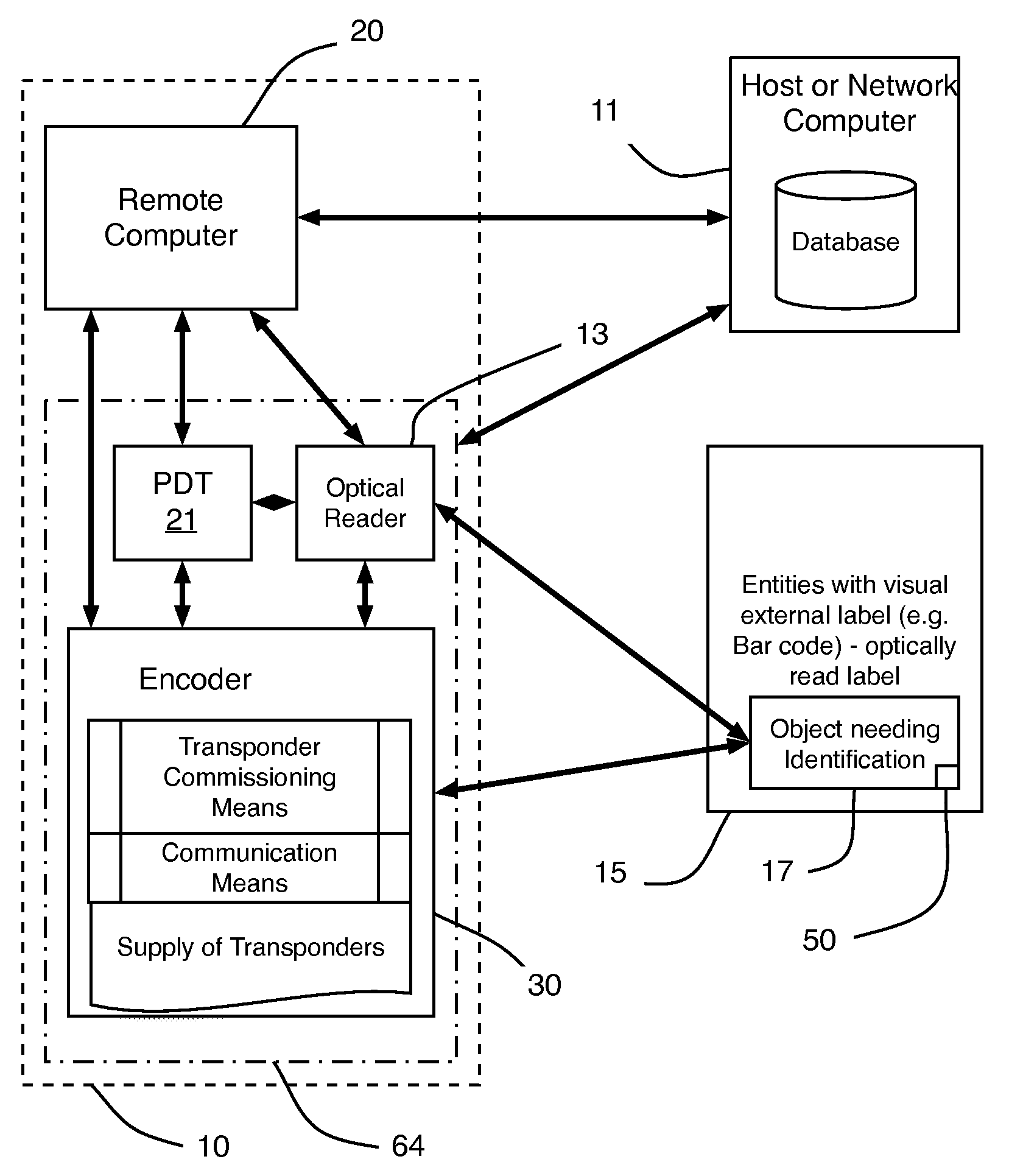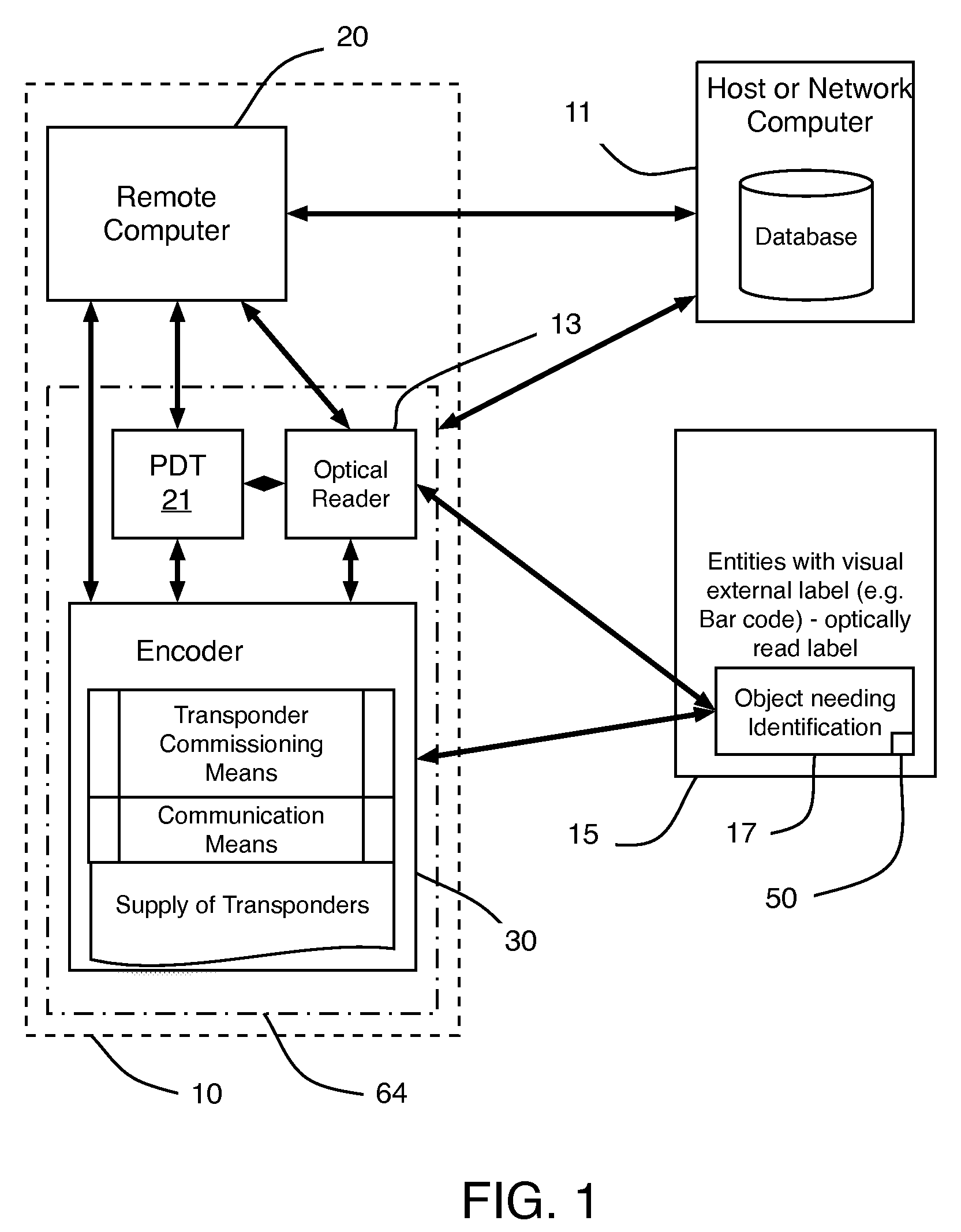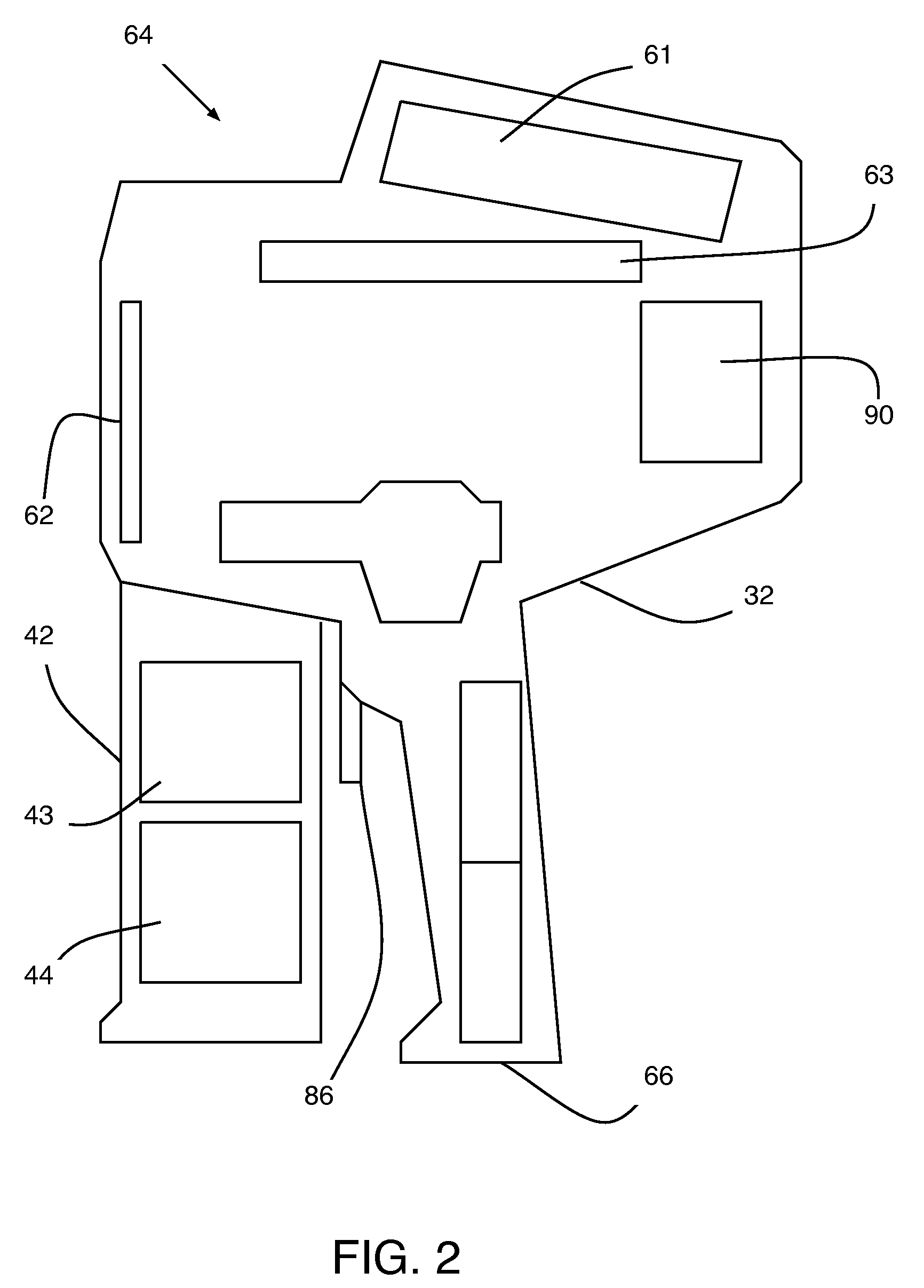Handheld and cartridge-fed applicator for commissioning wireless sensors
a wireless sensor and applicator technology, applied in the system field, can solve the problems of overdependence on the optical quality of the label, the requirement of line-of-sight, and the fact that the active transponder includes batteries
- Summary
- Abstract
- Description
- Claims
- Application Information
AI Technical Summary
Benefits of technology
Problems solved by technology
Method used
Image
Examples
Embodiment Construction
[0046]Possible embodiments will now be described with reference to the drawings and those skilled in the art will understand that alternative configurations and combinations of components may be substituted without subtracting from the invention. Also, in some figures certain components are omitted to more clearly illustrate the invention.
[0047]To clarify certain aspects of the present invention, certain embodiments are described in a possible environment—as identification means for containers. In these instances, certain methods make reference to containers such as loaded pallets, paperboard boxes, corrugated cartons, pharmaceutical containers, and conveyable cases, but other containers may be used by these methods. Certain embodiments of the present invention are directed for use with commercial corrugated shipping cartons, tagged pallet-loads of shrink-wrapped cases, consumer-goods packaging, consumer goods, or other methods of identifying objects using RFID transponders or wirel...
PUM
 Login to View More
Login to View More Abstract
Description
Claims
Application Information
 Login to View More
Login to View More - R&D
- Intellectual Property
- Life Sciences
- Materials
- Tech Scout
- Unparalleled Data Quality
- Higher Quality Content
- 60% Fewer Hallucinations
Browse by: Latest US Patents, China's latest patents, Technical Efficacy Thesaurus, Application Domain, Technology Topic, Popular Technical Reports.
© 2025 PatSnap. All rights reserved.Legal|Privacy policy|Modern Slavery Act Transparency Statement|Sitemap|About US| Contact US: help@patsnap.com



